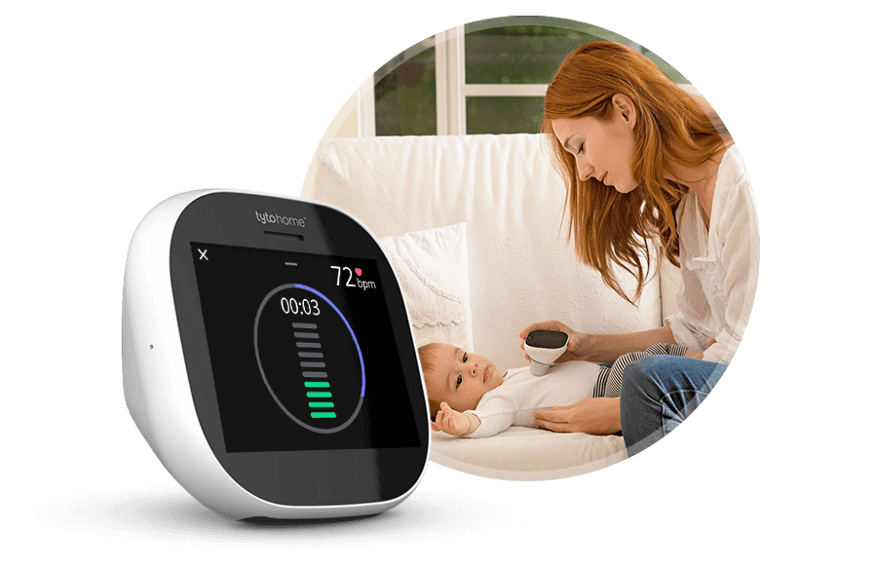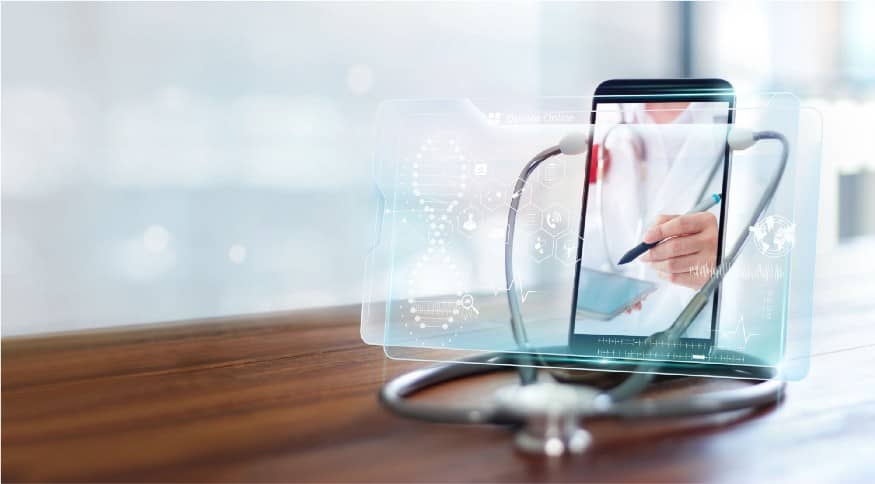
The coronavirus crisis has created a critical need for healthcare innovation — not just in finding treatments but also in how care is delivered. In these extraordinary times, the use of virtualized care is skyrocketing because it allows COVID-19 patients to be monitored without risking exposure for healthcare workers, and it enables healthy patients needing routine treatment to be examined by doctors from the comfort and safety of their own homes. It’s a better, safer, more efficient system.
The numbers make the long term shift to telehealth clear. Even before the pandemic, the use of telehealth was on the rise in the United States, with an analysis of insurance claims showing a 53 percent increase from 2016 to 2017. Now, routine patients don’t want to risk exposure by visiting a doctor’s office or hospital, and practitioners are seeking ways to monitor COVID-19 patients without requiring full protective garb for each temperature check or pulmonary exam. The United States federal government has put its weight behind telehealth, dedicating $200 million in CARES Act stimulus to help medical providers upgrade technology for telehealth and relaxing regulations to make it easier for Medicare plans to pay for visits conducted remotely.
But for telehealth to achieve its full promise, it needs to include more than just a conversation between doctor and patient conducted by videoconference. Doctors providing remote care must be able to collect patient data as though they were in the same exam room: take temperatures, listen to lungs, peer into ears, and ask patients to say “ahh.”
Innovative technology companies are working to make remote medical visits as effective as in-person appointments. TytoCare Ltd., for example, is an Israeli startup that has developed a handheld examination device that is transforming telehealth by making remote exams effective, efficient, and commonplace. Qualcomm Ventures LLC co-led a new round of funding for the company earlier this spring.

A patient with a TytoCare device in his or her home, whether furnished by a healthcare provider or purchased at a retail store, pairs it to his or her phone to stream data to the TytoCare platform. As it feeds video and sound back to the licensed physician via the TytoCare platform, the in-home device can also serve as a thermometer to take temperature readings, a stethoscope to listen to the heart, lungs, and abdomen, and an otoscope to inspect the ear canals.
The transition to 5G cellular technology will only improve the level of care TytoCare can provide. 5G will allow for even higher-quality telemedicine interactions between doctor and patient. More video, with higher resolution, will yield better diagnoses. Doctors will be more easily able to collaborate, viewing the same images simultaneously, in the same high quality. And the increased data flow enabled by 5G will permit TytoCare to implement even more AI processing, allowing for more powerful machine-aided diagnostics. Ultimately, 5G’s ability to transmit more data with lower latency should mean TytoCare can offer better service with a less expensive device.

AI helps the examining physician direct the patient in performing an exam. Much like the mobile-deposit feature on your bank’s mobile app that recognizes when a check is properly aligned within the frame of your phone’s camera, TytoCare’s AI guides the patient toward getting the right view, from the correct angle, of a sore throat or aching ear, for example. Machine learning also helps the physician to recognize abnormalities in that throat or ear, leveraging anonymized diagnostic data stored on TytoCare’s platform to make diagnoses faster and more accurate.
This technology isn’t designed to compete with the existing healthcare players like Amwell, Doctor On Demand, or Teladoc Health. Instead, TytoCare aims to complement the work done by doctors, hospitals, and telehealth providers. In 2019 alone, it served thousands of patients in more than 200,000 visits. And the demand is growing.
During this crisis, hospitals are sending patients with COVID-19 symptoms home with a TytoCare device, so they can be monitored without the need to return to the ER. Parents are buying TytoCare devices at retailers, so they can get their kids regular care without exposing them to risk. All of them are seeing how much easier it is to see a doctor without leaving their homes.
They realize this is a better way to provide primary care, and they’re not going back. Telehealth is here to stay.
Learn more about Qualcomm Ventures.



